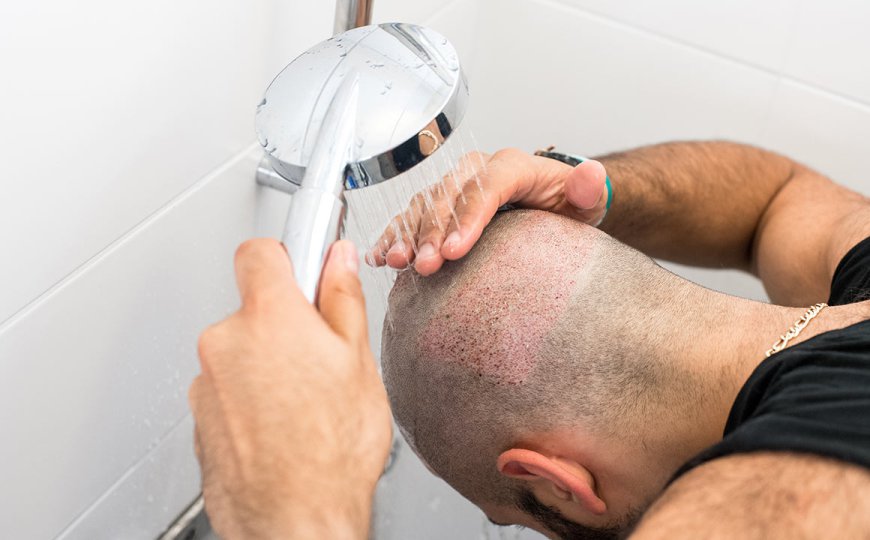Hair loss can be a challenging experience, affecting self-esteem and overall confidence. For many, a hair transplant offers a viable solution, restoring not just hair but also the sense of self. Understanding the various aspects of the procedure, including what you can expect from hair transplant cost, is crucial for making an informed decision.
Factors Influencing Hair Transplant Cost
When considering Hair Transplant Cost in Dubai it's essential to recognize the numerous factors that can influence the overall cost. One of the primary factors is the type of procedure chosen. There are two main techniques: Follicular Unit Extraction (FUE) and Follicular Unit Transplantation (FUT). Each method has its advantages and can vary significantly in price due to differences in the technique, recovery time, and the level of expertise required.
Geographic Location
The location of the clinic plays a significant role in determining the hair transplant cost. Clinics in metropolitan areas or regions with a higher cost of living may charge more than those in smaller towns or rural areas. This disparity can be due to overhead expenses, local demand, and competition among clinics. Therefore, researching various locations can provide insights into price variations.
Surgeon’s Expertise
Another important consideration is the experience and qualifications of the surgeon performing the transplant. Highly experienced and reputable surgeons often charge more for their services. However, investing in a skilled professional can lead to better results and fewer complications. It’s wise to seek reviews and before-and-after photos to assess the surgeon’s capabilities.
What to Expect in Terms of Procedure
Understanding the procedure itself can help set realistic expectations regarding hair transplant cost. Typically, the process begins with a consultation, where the surgeon evaluates your hair loss and discusses the best options tailored to your needs. During this consultation, you can also inquire about financing options or payment plans that might be available.
Pre-Operative Preparation
Before the procedure, patients are often advised to avoid certain medications and supplements that could increase bleeding. The surgeon will provide specific instructions to ensure the best outcome. This phase may also include preparatory treatments aimed at optimizing the scalp condition.
The Transplant Procedure
On the day of the procedure, local anesthesia is administered to ensure comfort. The surgeon will then extract hair follicles from the donor area—usually the back of the head—and implant them into the balding or thinning areas. The duration of the procedure can vary, often taking several hours depending on the number of grafts being transplanted.
Post-Operative Care
After the transplant, it’s essential to follow post-operative care instructions provided by the clinic. This typically includes guidelines on how to wash your hair, medications to manage pain or swelling, and avoiding certain activities for a period of time. Proper post-operative care can significantly influence the success of the transplant and the satisfaction with the results.
Recovery Timeline
Patients can expect some swelling and redness immediately following the procedure. Most people can return to work within a few days, but it’s crucial to allow time for healing. The newly transplanted hair will typically fall out within a few weeks, leading to a natural shedding process. Hair regrowth usually begins around three to four months after the procedure, with full results becoming apparent within a year.
Additional Costs to Consider
While discussing what to expect from hair transplant cost, it’s important to note that additional expenses may arise during the journey. Follow-up appointments, any necessary touch-up procedures, and post-operative treatments can add to the overall financial commitment. Always inquire about these potential costs during your initial consultations.
Financing Options
Many clinics offer financing plans to help make hair transplant procedures more accessible. These options can include monthly payment plans or partnerships with medical financing companies. Exploring these options can alleviate some of the financial burdens and allow patients to focus on their recovery and results.
Realistic Expectations
Having realistic expectations about the outcomes is crucial. While hair transplants can significantly improve hair density and overall appearance, results may vary based on individual factors such as hair type, skin condition, and overall health. Engaging in open discussions with your surgeon about expected outcomes can help align your goals with achievable results.
Emotional Impact
It’s not just the physical transformation that matters; the emotional impact of a successful hair transplant can be profound. Many patients report increased confidence and improved self-image after the procedure, often leading to better social interactions and enhanced quality of life.
Conclusion
Navigating the world of hair transplants requires understanding what to expect from hair transplant cost and the factors that influence it. By considering elements such as the type of procedure, geographic location, and surgeon’s expertise, individuals can better prepare themselves for the financial commitment. Additionally, recognizing the importance of post-operative care and realistic expectations can lead to a more satisfying experience.
In summary, a hair transplant is an investment in both appearance and confidence. With proper research and planning, individuals can embark on their hair restoration journey equipped with knowledge, ensuring a positive outcome that enhances not just their hairline but their overall self-esteem.


 laiba5656
laiba5656